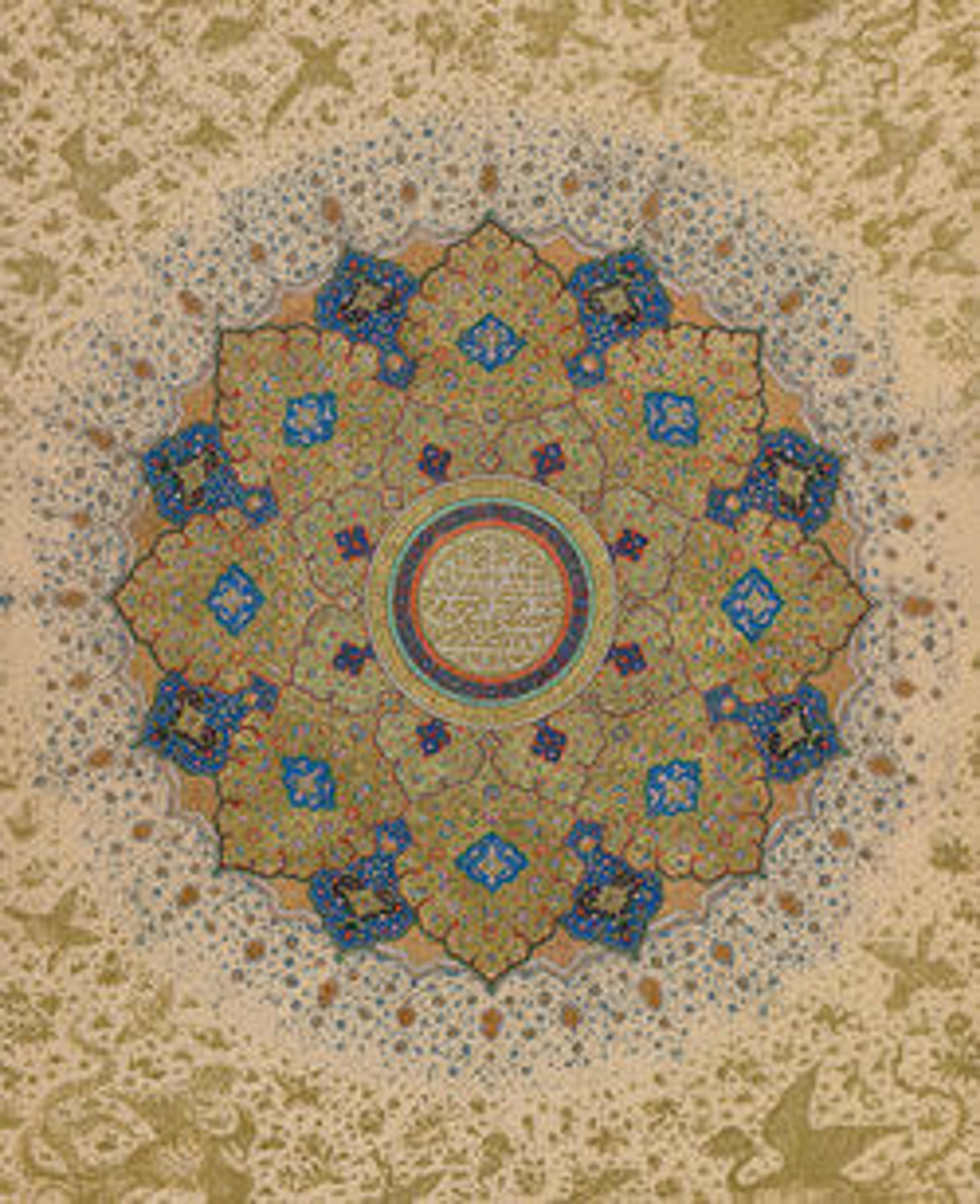"The Anecdote of the Man Who Fell into the Water", Folio 44r from a Mantiq al-Tayr (Language of the Birds)
This painting from Attar’s Mantiq al‑Tair illustrates the parable told by the hoopoe in which a man’s pride in his exceptionally long beard causes him to drown in the sea—teaching that pride in worldly attachments will eventually bring one to ruin. The prominent, but seemingly unrelated, image of a man gathering firewood in the foreground has been interpreted as a visual pun embodying mystical significance. Some scholars see it as a metaphor for a breathing meditation practice followed by Sufi adherents that produces a sound akin to sawing wood.
Artwork Details
- Title:"The Anecdote of the Man Who Fell into the Water", Folio 44r from a Mantiq al-Tayr (Language of the Birds)
- Calligrapher:Sultan 'Ali al-Mashhadi (Iranian, Mashhad 1453–1520 Mashhad)
- Author:Farid al-Din `Attar (Iranian, Nishapur ca. 1142–ca. 1220 Nishapur)
- Date:dated 892 AH/1487 CE
- Geography:Made in present-day Afghanistan, Herat
- Medium:Opaque watercolor, silver, and gold on paper
- Dimensions:Painting: H. 7 3/8 in. (18.7 cm)
W. 5 1/8in. (13cm)
Page: H. 13 in. (33 cm)
W. 8 7/16 in. (21.4 cm)
Mat: H. 19 1/4 in. (48.9 cm)
W. 14 1/4 in. (36.2 cm) - Classification:Codices
- Credit Line:Fletcher Fund, 1963
- Object Number:63.210.44
- Curatorial Department: Islamic Art
More Artwork
Research Resources
The Met provides unparalleled resources for research and welcomes an international community of students and scholars. The Met's Open Access API is where creators and researchers can connect to the The Met collection. Open Access data and public domain images are available for unrestricted commercial and noncommercial use without permission or fee.
To request images under copyright and other restrictions, please use this Image Request form.
Feedback
We continue to research and examine historical and cultural context for objects in The Met collection. If you have comments or questions about this object record, please contact us using the form below. The Museum looks forward to receiving your comments.
